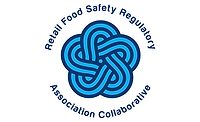Growth in the number of food safety incidents, increased media scrutiny and evolving regulatory requirements have made clear the expectation that the food industry will source, produce and deliver safe and high quality food. With U.S. Food and Drug Administration (FDA) deadlines looming for small and medium-size companies to meet the latest requirements of the Food Safety Modernization Act (FSMA), the industry is under pressure to regain consumer trust by delivering safe and high-quality food while meeting these new rigorous regulatory requirements.
There is a real need to have a risk-based preventive approach to food safety in which data and expertise are used to pinpoint potential food safety issues along the production, distribution and supply chain. A proactive approach to food safety will help organizations avoid food-safety incidents, resulting in improved brand reputation and consumer loyalty.
This risk-based approach can be leveraged through the standard Hazard Analysis and Critical Control Points (HACCP) process, which is the primary system used by the food industry. HACCP provides a systematic preventative approach to food safety examining various types of hazards in production processes that can jeopardize food safety. The process also provides a framework to implement measures to reduce these risks to a safer level.
But now, with the implementation of FSMA, HACCP becomes a part of a food manufacturer’s compliance to Hazard Analysis and Risk-Based Preventive Controls (HARPC). HAACP and HARPC share more than just a few letters—they are both food safety standards based on prevention, but they differ on implementation. A HARPC plan is not a replacement for HACCP, but a necessary upgrade.
HARPC covers food safety concerns beyond CCPs and is mandated by FDA for most facilities. This system relies on the applicable FDA regulations, standards and guidance documents to develop a preventive control plan.
The date for registered companies (with > 500 employees at the corporate level) to comply with the first FSMA rule—Preventive Controls—was September 19, 2016. For companies with fewer than 500 employees at the corporate level, the compliance date is coming fast—September 18, 2017.
When it comes to the Preventive Controls rule, the key question for companies, regardless of size, is whether they have aligned their preventive controls development with existing HACCP programs to meet current FSMA requirements.
Companies are continually looking for help in meeting these new requirements in time for FDA deadlines. Many manufacturers are turning to technology to assist them. Technology enables companies to adopt an integrated approach to food safety programs. The solutions available in the market are packed with strong capabilities and functionalities empowering companies to adopt a workflow-based approach, automate and streamline key processes, eliminate silos and seamlessly achieve the desired results from the risk-based preventive food safety program. These technology solutions include:
Compliance management: Companies can leverage technology to centrally manage compliance standards and requirements mapped to relevant country, business units and processes, products and suppliers. Central repositories with strong document management functionalities help with record keeping.
Supplier and product information management: Sophisticated web-based solutions can be deployed to simplify the process of capturing and managing supplier and product information including sub-suppliers, lab, testing, verification and validation on preventive control, country of origin and transit information.
Hazard analysis and risk management: Technology can help automate the end-to-end Hazard Analysis and risk management processes. Solutions include templates to facilitate hazard classification and tools such as risk heat maps, risk calculators and scorecards for hazard analysis and risk assessment. These tools help augment the process of identifying, evaluating and prioritizing food quality and safety risks including supplier and supply chain risks. These technology solutions are equipped with risk-rating and -ranking capabilities, and help to determine the impact, likelihood, severity and frequency of hazards and risk in a simple and consistent manner.
Preventive controls management: Advanced solutions help create and manage preventive controls for CCPs and non-CCPs including process controls, food allergen controls, sanitation controls, recall plan, environment monitoring, supplier verification and training. This technology can link controls to identified hazards and centrally manage scientific and technical information to determine if controls are adequate. It can leverage industry-based methodologies for validation of preventive controls, such as product testing and environment testing.
Audit and inspection management: These solutions help in conducting audits including internal, quality and safety audits. Companies also can efficiently conduct controls monitoring. Cutting edge, audit-management solutions provide companies with the ability to centrally manage audit resources, schedules and checklists. Offline audit solutions allow for gathering of audit data even in remote locations which are not connected to the central corporate network and have no Internet access.
A risk-based preventive approach to food safety is critical. An integrated technology solution can help maintain a central repository for managing multiple compliance standards and requirements, thus ensuring compliance with the law. At a time when the food industry is under pressure to regain consumer trust following a series of food safety incidents worldwide, a preventive approach to food safety can go a long way in ensuring safe food supply, regaining consumer trust and protecting the brand image of food manufacturers. With a preventive approach in place, organizations can reduce the number of product failures and recalls and control costs.
Maria Ferrante is the senior director of marketing and communications at PMMI, the association for packaging and processing technologies. For more information on the association, please visit www.pmmi.org.
Putting the Right Controls in Place for Food Safety




